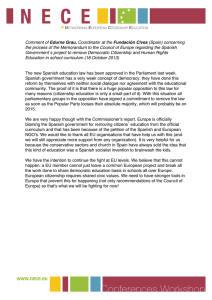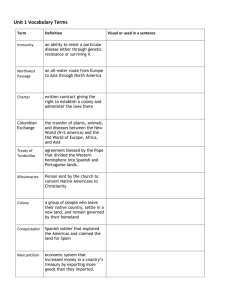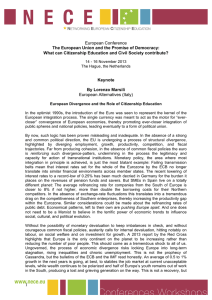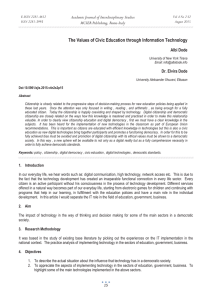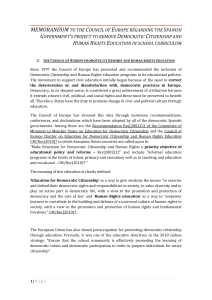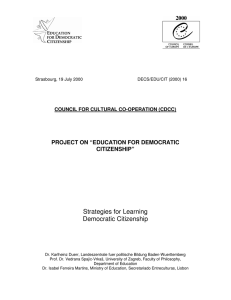The Spanish May 15 Movement, cyber social movements changing
advertisement
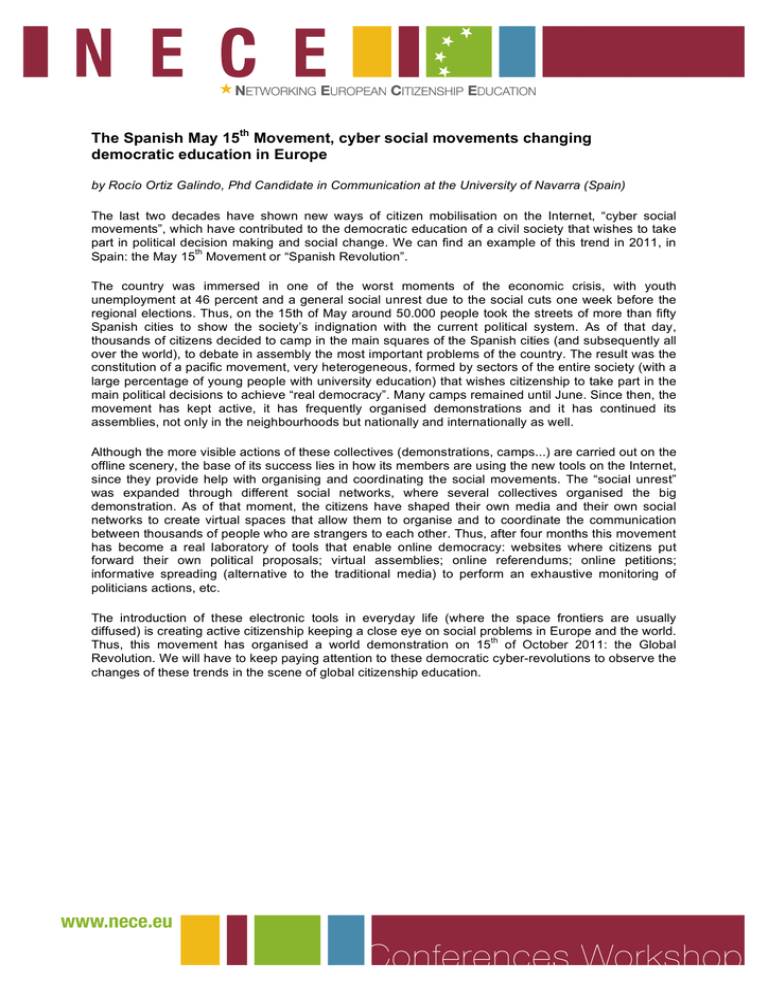
The Spanish May 15th Movement, cyber social movements changing democratic education in Europe by Rocío Ortiz Galindo, Phd Candidate in Communication at the University of Navarra (Spain) The last two decades have shown new ways of citizen mobilisation on the Internet, “cyber social movements”, which have contributed to the democratic education of a civil society that wishes to take part in political decision making and social change. We can find an example of this trend in 2011, in th Spain: the May 15 Movement or “Spanish Revolution”. The country was immersed in one of the worst moments of the economic crisis, with youth unemployment at 46 percent and a general social unrest due to the social cuts one week before the regional elections. Thus, on the 15th of May around 50.000 people took the streets of more than fifty Spanish cities to show the society’s indignation with the current political system. As of that day, thousands of citizens decided to camp in the main squares of the Spanish cities (and subsequently all over the world), to debate in assembly the most important problems of the country. The result was the constitution of a pacific movement, very heterogeneous, formed by sectors of the entire society (with a large percentage of young people with university education) that wishes citizenship to take part in the main political decisions to achieve “real democracy”. Many camps remained until June. Since then, the movement has kept active, it has frequently organised demonstrations and it has continued its assemblies, not only in the neighbourhoods but nationally and internationally as well. Although the more visible actions of these collectives (demonstrations, camps...) are carried out on the offline scenery, the base of its success lies in how its members are using the new tools on the Internet, since they provide help with organising and coordinating the social movements. The “social unrest” was expanded through different social networks, where several collectives organised the big demonstration. As of that moment, the citizens have shaped their own media and their own social networks to create virtual spaces that allow them to organise and to coordinate the communication between thousands of people who are strangers to each other. Thus, after four months this movement has become a real laboratory of tools that enable online democracy: websites where citizens put forward their own political proposals; virtual assemblies; online referendums; online petitions; informative spreading (alternative to the traditional media) to perform an exhaustive monitoring of politicians actions, etc. The introduction of these electronic tools in everyday life (where the space frontiers are usually diffused) is creating active citizenship keeping a close eye on social problems in Europe and the world. th Thus, this movement has organised a world demonstration on 15 of October 2011: the Global Revolution. We will have to keep paying attention to these democratic cyber-revolutions to observe the changes of these trends in the scene of global citizenship education.
